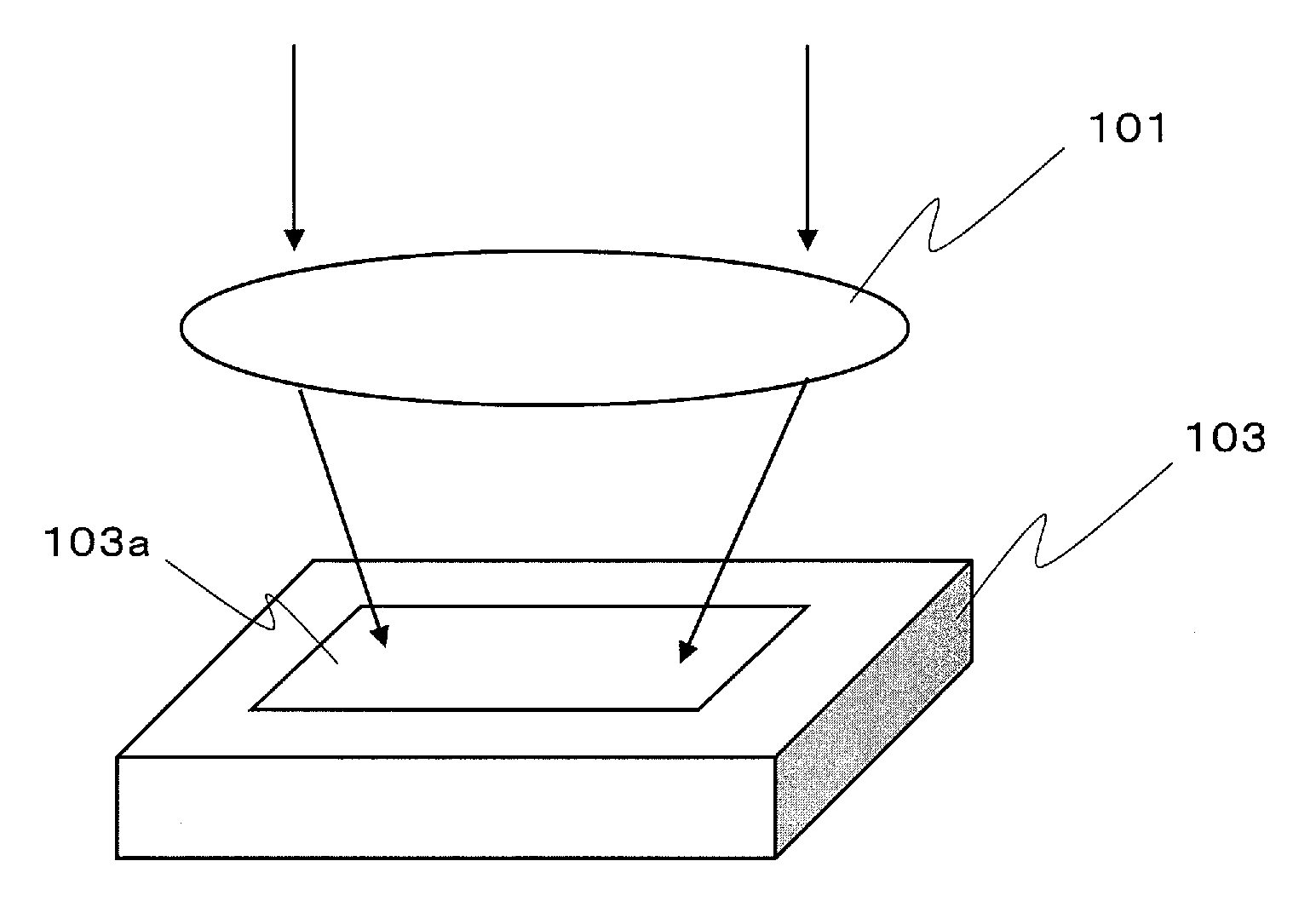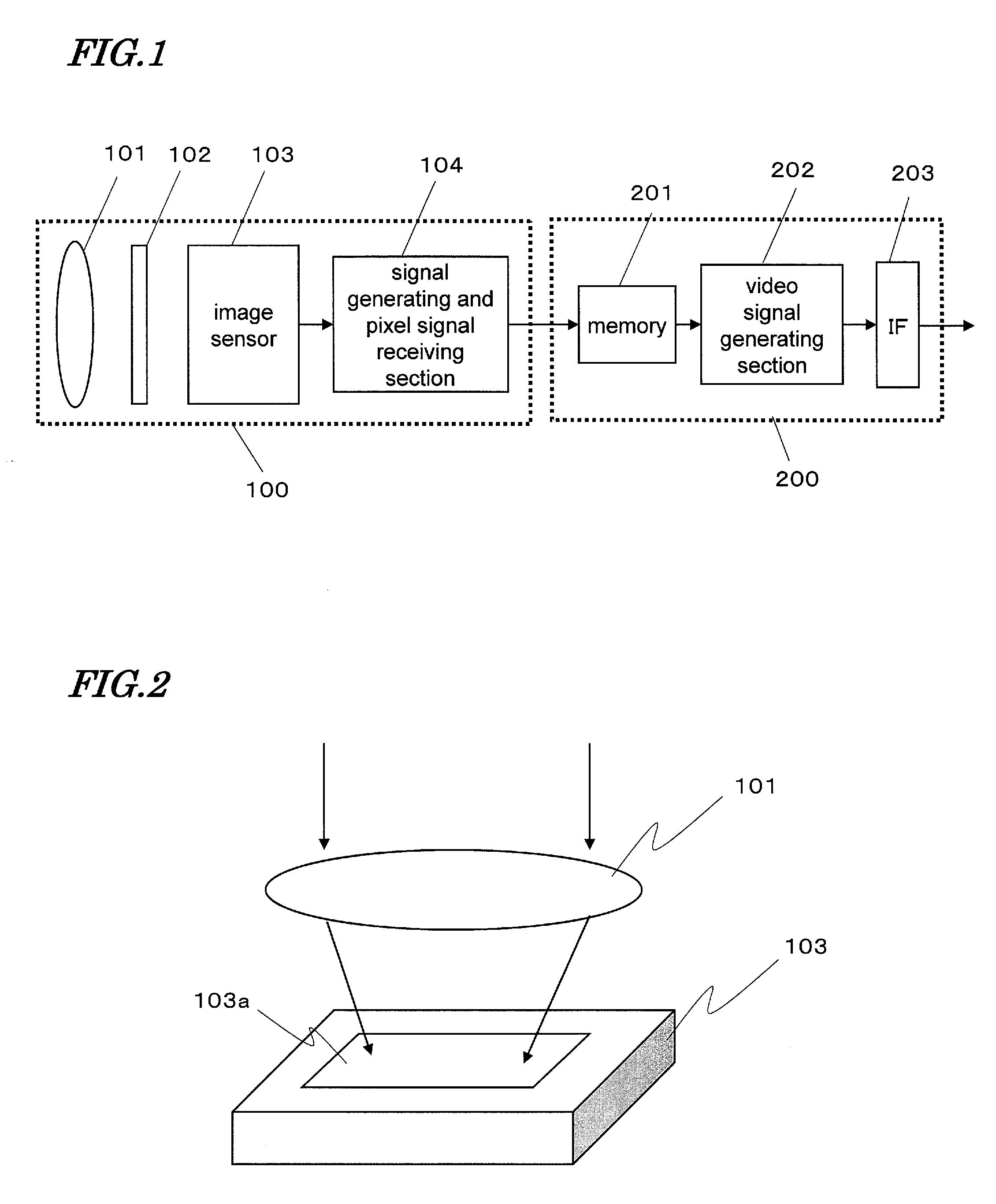Image capture device
- Summary
- Abstract
- Description
- Claims
- Application Information
AI Technical Summary
Benefits of technology
Problems solved by technology
Method used
Image
Examples
embodiment 1
[0045]FIG. 1 is a block diagram illustrating an overall configuration for an image capture device as a first specific preferred embodiment of the present invention. The Image capture device shown in FIG. 1 includes an image capturing section 100 and a signal processing section 200 that receives a signal from the image capturing section 100 and generates a video signal. The configuration and operation of the image capturing section 100 and the signal processing section 200 will be described.
[0046]The image capturing section 100 includes a lens 101 for imaging a given subject, an optical plate 102, an image sensor 103 for converting optical information, which has been collected by imaging the subject through the lens 101 and the optical plate 102, into an electrical signal by photoelectric conversion, and a signal generating and pixel signal receiving section 104. In this case, the optical plate 102 is a combination of a quartz crystal low-pass filter for reducing a moiré pattern to b...
embodiment 2
[0068]Hereinafter, a second specific preferred embodiment of the present invention will be described with reference to FIGS. 4(a) to 4(c) and FIG. 5. The image capture device of this preferred embodiment has quite the same configuration as the counterpart of the first preferred embodiment described above except its solid-state image sensor. Thus, the following description will be focused on only the differences from the first preferred embodiment described above. In the following description, any component having substantially the same function as its counterpart of the first preferred embodiment described above will be identified by the same reference numeral as the one used for the first preferred embodiment.
[0069]FIG. 4(a) is a pixel plan view illustrating a part of an array of dispersive elements, a part of an array of photosensitive cells and how light is split in a solid-state image sensor according to this preferred embodiment. On the other hand, FIGS. 4(b) and 4(c) are cross...
embodiment 3
[0082]Hereinafter, a third specific preferred embodiment of the present invention will be described with reference to FIGS. 6(a) to 6(c). The image capture device of this preferred embodiment has quite the same configuration as the counterpart of the first preferred embodiment described above except its solid-state image sensor. Thus, the following description will be focused on only the differences from the first preferred embodiment described above. In the following description, any component having substantially the same function as its counterpart of the first preferred embodiment described above will be identified by the same reference numeral as the one used for the first preferred embodiment.
[0083]FIG. 6(a) is a pixel plan view illustrating a part of an array of dispersive elements, a part of an array of photosensitive cells and how light is split in a solid-state image sensor according to this preferred embodiment. On the other hand, FIGS. 6(b) and 6(c) are cross-sectional v...
PUM
 Login to View More
Login to View More Abstract
Description
Claims
Application Information
 Login to View More
Login to View More - R&D
- Intellectual Property
- Life Sciences
- Materials
- Tech Scout
- Unparalleled Data Quality
- Higher Quality Content
- 60% Fewer Hallucinations
Browse by: Latest US Patents, China's latest patents, Technical Efficacy Thesaurus, Application Domain, Technology Topic, Popular Technical Reports.
© 2025 PatSnap. All rights reserved.Legal|Privacy policy|Modern Slavery Act Transparency Statement|Sitemap|About US| Contact US: help@patsnap.com



